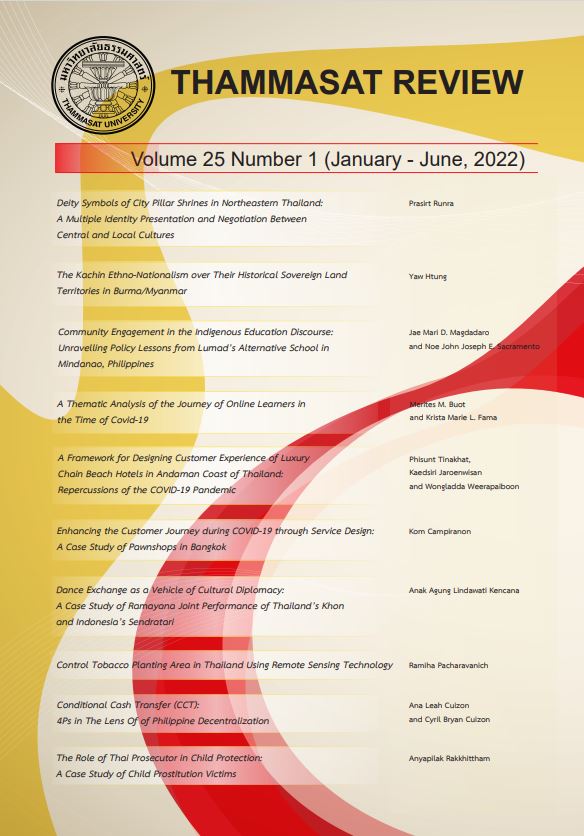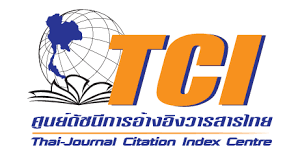Deity Symbols of City Pillar Shrines in Northeastern Thailand: A Multiple Identity Presentation and Negotiation Between Central and Local Cultures
Keywords:
City Pillar, Deity Symbols, Identity, Northeastern ThailandAbstract
The purposes of this study were: to explore the diversity of the deity symbols found in city pillar shrines in northeastern Thailand and to analyze social factors and contexts affecting the presentation of identity through these symbols in the context of central and local cultures. This study was conducted using a folkloristic research approach with an emphasis on field data collection. The embedded community observation method and a theoretical approach to the study of human-community relations, allows researchers to observe ideas, beliefs, and multidimensional community-based approaches. Most importantly, this approach is the study of the cultural expression of human beings who coexist in society, with an emphasis on field data collection. In three population groups, the researcher used the in-depth interview request method: 1) government agencies involved in the construction of the provincial city pillar shines, 2) public academics or local scholars, and 3) tourists. The research results revealed that deity symbols in the city pillar shrines in northeastern Thailand reflected how the central government was accepted as the highest governing body. However, under that acceptance there were also negotiating currents as shown through the combination of local beliefs, which were carefully placed with well-planned priorities to integrate harmoniously into the same area. Nonetheless, the study results also indicated that building of the city pillar shrines might not have been rooted from the local culture but a practice influenced by the central government. This led to the locals having to adapt their original belief to coincide with the downpour of external culture as reflected through today’s deity symbols in the city pillar shrines.
Downloads
Published
How to Cite
Issue
Section
License
Copyright (c) 2022 Thammasat Review

This work is licensed under a Creative Commons Attribution-NonCommercial-NoDerivatives 4.0 International License.
The opinions and ideas expressed in all submissions published in Thammasat Review are solely that of the author(s) and do not necessarily reflect that of the editors or the editorial board.
The copyright of all articles including all written content and illustrations belong to Thammasat Review. Any individuals or organisation wishing to publish, reproduce and distribute a particular manuscript must seek permission from the journal first.






